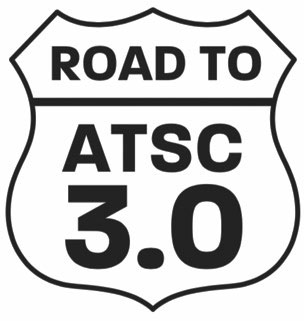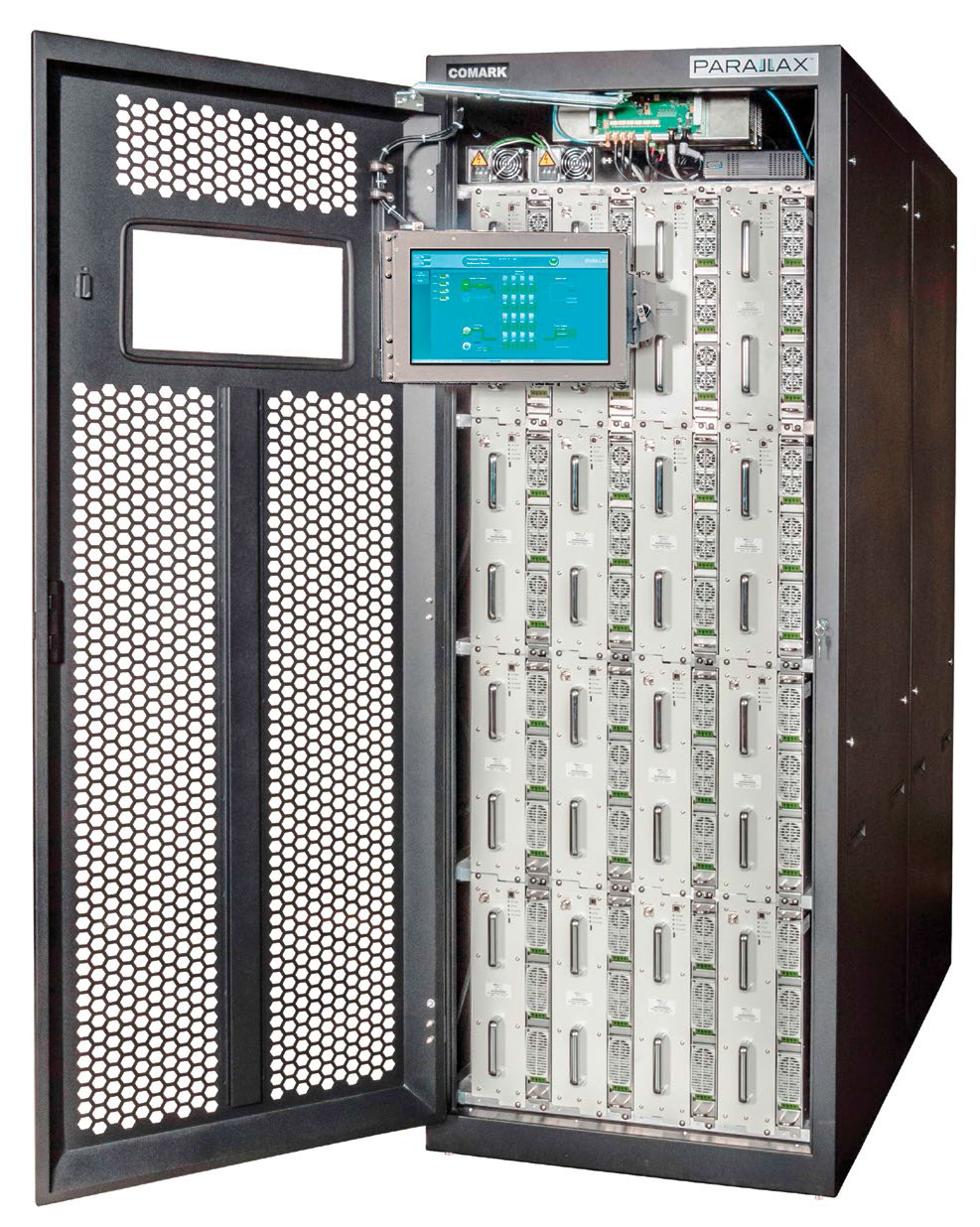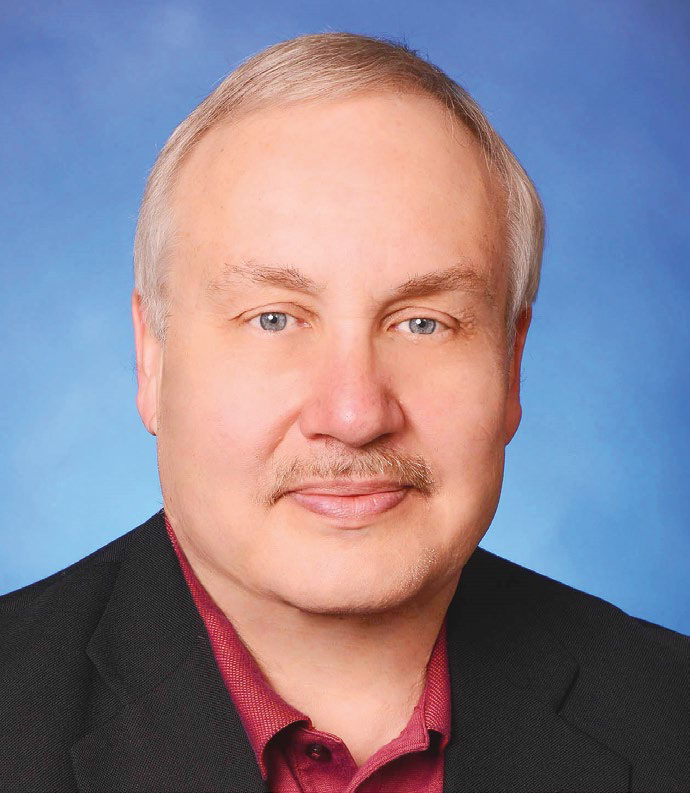Previewing Next Gen TV at the NAB Show
Although the ongoing TV broadcast spectrum repack has been commanding attention of station operators, moving ahead with implementation of next-generation television is getting a lot of thought too. The enabler for transmitting UHD, high dynamic range, extended color gamut and immersive audio technologies is the freshly-minted ATSC 3.0 DTV transmission standard, and this year’s NAB Show is featuring 3.0 in a big way.

Once again, the Advanced Television Systems Committee will set up house at the lobby between Central and North Hall and in the North Hall itself at the Las Vegas Convention Center, with the theme, “Riding the Road to ATSC 3.0.”
These two spots will “provide a live stage for education and information about deployment of the Next Gen TV standard,” said ATSC 3.0 spokesman Dave Arland. The lobby location will include a live TV studio and the North Hall locale “will include a presentation area where speakers will discuss 3.0 deployments, content security, advanced advertising possibilities, consumer devices for the standard and more.”
Arland added that the ATSC is also planning to issue a “Where to Find ATSC 3.0 at the NAB Show” guide that will pinpoint locations within the LVCC where 3.0 products or technology is on display.
PUTTING 3.0 ON THE AIR
The transmitter plant and installation of an ATSC 3.0-capable exciter is the first place to start, and as ATSC 1.0 and 3.0 peak-to-average power ratios are different, a more powerful transmitter may be needed to ensure the coverage now afforded.
Whether it’s only an exciter upgrade, or a completely new transmitter system, prospective Next Gen TV adopters will find plenty to choose from, with multiple offerings from Hitachi-Comark, GatesAir, Rohde & Schwarz and others.
“The exhibition floor at this year’s NAB Show will be more active than ever with ATSC 3.0 innovations and demonstrations,” said Ray Miklius, GatesAir’s vice president and general manager of television. “GatesAir will play a large role in this, including demonstrations of seamless transition from ATSC 1.0 to ATSC 3.0, and operating ATSC 3.0 networks in SFN mode [and] we will also emphasize the ATSC 3.0-readiness of our transmission line, [which is] all equipped with our software-defined ATSC 3.0-ready exciter.”
While Hitachi-Comark will be showing their full line of ATSC 3.0-ready Parallax liquid-cooled and E-Compact air-cooled transmitters, Joe Turbolski, the company’s director of sales operations, promises there’ll be more than just “big iron” for booth visitors to inspect. Look for a fully IP-enabled workflow of ATSC 3.0 equipment, beginning with live camera 1080p video, an Exact-V2 DTV exciter for generating 3.0 signals, reception on a 3.0-enabled consumer TV, a home gateway for Wi-Fi distribution to handheld devices and more.

Rohde & Schwarz also promises plenty to see 3.0-wise at its exhibit, including a software-based implementation of the DTV standard in conjunction with R&S’s THU9evo liquid-cooled high-power UHF transmitter. The company will also unveil a VHF version of the THV9evo that fully supports 3.0 broadcasting, as well as a new exciter, the SDE900, which provides an easy path to airing ATSC 3.0.
“Thanks to the purely software-based implementation, the exciter enables broadcasters and network operators to optimally leverage the full capabilities of the standard and gives great flexibility to upgrade for future standard evolution,” said Graziano Casale, transmitter account manager for Rohde & Schwarz. The exciter supports such 3.0 features as multiple physical layer pipes, multiple subframes, as well as SFN operation and layered-division multiplexing (LDM) to help maximize station coverage, Casale added.
HOW’S MY NEXT-GEN SIGNAL LOOKING?
To transmit those new signals, being able to decode an off-air sample is essential. DVEO will show their broadcast-quality TLV500E demodulator that accommodates ATSC 3.0 and 1.0 signals. It’s joined by the new Cortina 4K HDR IP: ATSC 3.0, which provides 3.0-compatible MTP or TS outputs, and eYe Grabber ATSC 3.0, a compact, portable device that provides signals for 3.0 demos and testing.
DTV Innovations will show its PSIP Pro/Central Platforms that provide full 3.0 signaling and service announcement capabilities, as well as an interactive program guide and advanced emergency alerting. The company will also feature their Hydra platform that combines audio/video encoding and multiplexing with PSIP Pro signaling to provide a basic “station-in-a-box” approach for either ATSC 1.0 or 3.0.
Harmonic is featuring a “software-centric” approach to video delivery, which allows broadcasters to comply with 3.0/1.0 broadcasting requirements, enabling everything from channel sharing to UHD, next-gen audio and hybrid OTA/OTT services. The system centers around Harmonic’s Electra XOS live video processor and stat mux technology for delivering high-quality signals and also “decorating” new 3.0 channels for targeted advertising, a feature specific to 3.0. Harmonic is also showing their VOS 360 SaaS media processor for enabling hybrid OTA and internet content delivery.
“ATSC 3.0 is an exciting new technology that will connect broadcasters to the internet using a broadcaster-controlled distribution platform, yet there’s a lot to learn about how to successfully deploy it,” said Jean Macher, director of broadcast market development for Harmonic. “At the 2019 NAB Show, I’ll present on the architecture for OTA and hybrid OTA/OTT services implemented by Weigel Broadcasting in Chicago. Attendees will learn what’s required to run hybrid ATSC 3.0 services, with actual trial results from the Weigel on-air system.”
Enensys Technologies will intro SmartGate, a new fully-virtualized broadcast gateway that provides IP stream adaptation, PLP allocation, timing, in-band control and signaling for modulators in a 3.0 SFN configuration. Enensys will also premier vCN, a new SaaS product for installing and managing 3.0 NOC infrastructures on public or private cloud platforms, according to product manager Jérôme Floch.
Triveni Digital will showcase their StreamScope XM Verifier, a Windows-based app for receiving, verifying and recording 3.0 broadcast signals via ROUTE or MMTP protocols. It checks multiple 3.0 signal components, including metadata, to provide a comprehensive view of ATSC 3.0 services being transmitted.
Greatly enhanced emergency alerting capabilities are part of the 3.0 standard, and Digital Alert Systems will demonstrate these with the DASDEC-II platform for alerting and CAP (Common Alerting Protocol) message management. Additional technology includes DASDEC’s EAS-Net software module, which handles the content management necessary for aggregating and presenting urgent information via ATSC 3.0.
ATSC 3.0 also provides audio capabilities not possible in existing DTV delivery systems, and as it’s an open standard, adopters don’t have to lock in on a particular audio “flavor.” South Korea elected Fraunhofer’s MPEG-H, while U.S. broadcasters favor Dolby Labs’ AC-4. Both will provide demonstrations of just how good and feature-rich 3.0’s multichannel, multilevel audio delivery can be.
TAKING ATSC 3.0 INTO THE FUTURE
Although ATSC 3.0 is “here and now,” look for exhibits in the NAB’s Futures Park that will demonstrate even more of the standard’s potential. Korea’s Electronics and Telecommunications Research Institute (ETRI) will demonstrate several advanced capabilities, with a spotlight on “seamless convergence” of ATSC 3.0 broadcast and IP broadband connectivities.
Look for demos of seamless switching between the SHVC base and enhancement layers in broadband and broadcast networks, as well as a hybrid service delivery with the base layer delivered by conventional OTA and the enhancement layer traveling via broadband. ETRI will also show 8K UHD transmission made possible by 3.0’s channel bonding capability.

Another 3.0 NAB Show highlight is the operation of both fixed and “roving” ATSC 3.0 low-power transmitters, which are part of separate SFN demonstrations. One of these will be operated in a fixed location as part of the ATSC’s “Riding the Road to ATSC 3.0” North Hall exhibit, and the other is intended to be moved around the LVCC. It’s being provided by the Sinclair Broadcast Group, and although details aren’t available yet, Fred Baumgartner, director of Next Generation Implementation for Sinclair/ONEMedia said “we’re doing our best to make this a reality.”
Baumgartner refers to the demo as the “TOW” (transmitter on wheels). “Its purpose is to boost coverage of our existing Las Vegas area 3.0 Ch. 33 transmitting facility as part of a single frequency network,” he said. “We want to make OTA 3.0 signals readily available for anyone at the convention center who wants to utilize them in demos.”
Sinclair also plans to privately demos of its new low-power consumption ATSC 3.0 chip that the company has commissioned for mobile devices. Developed by ONEMedia and Saankhya Labs in India, the chipset was first demonstrated at the 2019 International CES in January.
All in all, 2019 looks to be the biggest year yet for ATSC 3.0 at the NAB Show. For broadcasters even remotely considering making the switch, this will be the place to prepare for it.
For a comprehensive source of TV Technology’s ATSC 3.0 coverage, see ourATSC3 silo.
Get the TV Tech Newsletter
The professional video industry's #1 source for news, trends and product and tech information. Sign up below.
James E. O’Neal has more than 50 years of experience in the broadcast arena, serving for nearly 37 years as a television broadcast engineer and, following his retirement from that field in 2005, moving into journalism as technology editor for TV Technology for almost the next decade. He continues to provide content for this publication, as well as sister publication Radio World, and others. He authored the chapter on HF shortwave radio for the 11th Edition of the NAB Engineering Handbook, and serves as editor-in-chief of the IEEE’s Broadcast Technology publication, and as associate editor of the SMPTE Motion Imaging Journal. He is a SMPTE Life Fellow, and a Life Member of the IEEE and the SBE.

